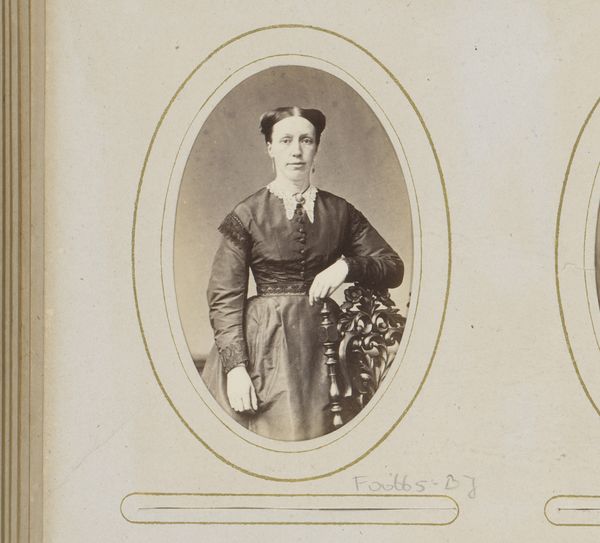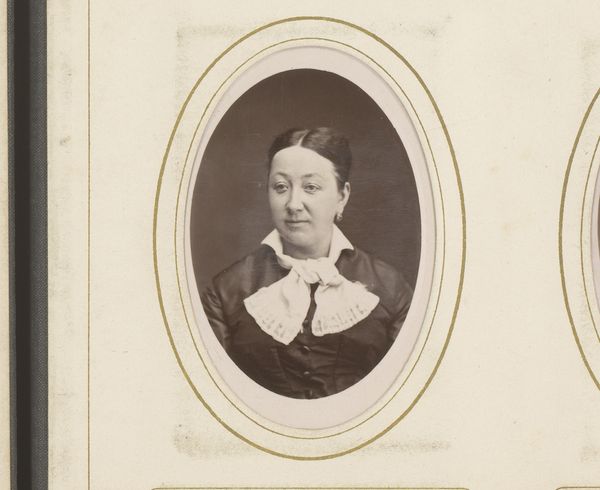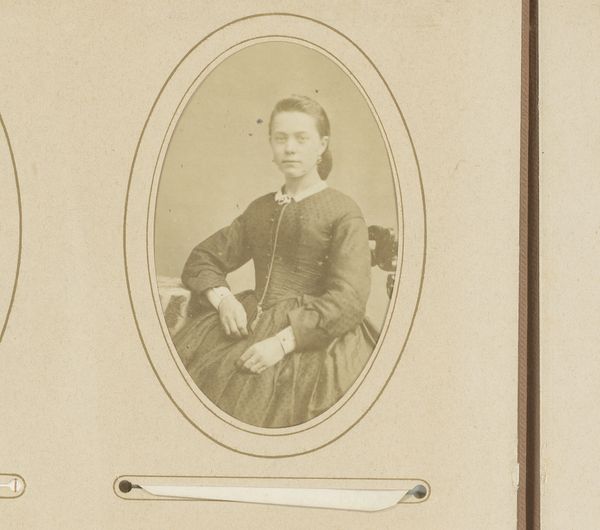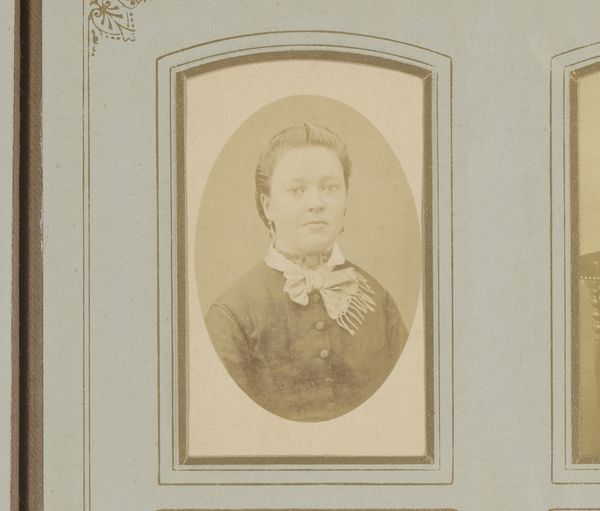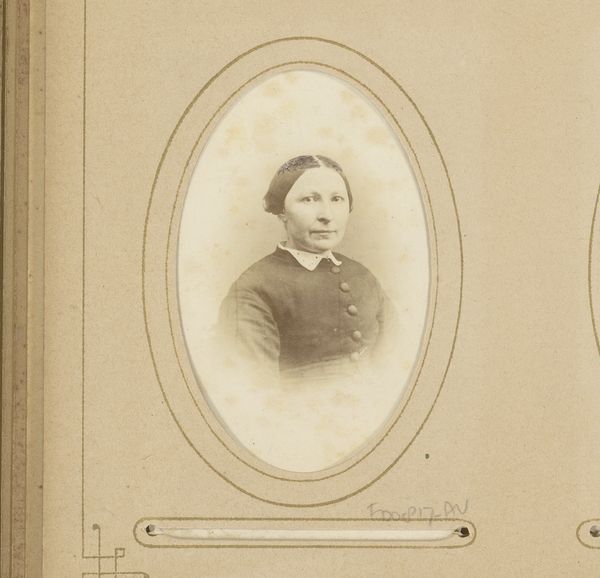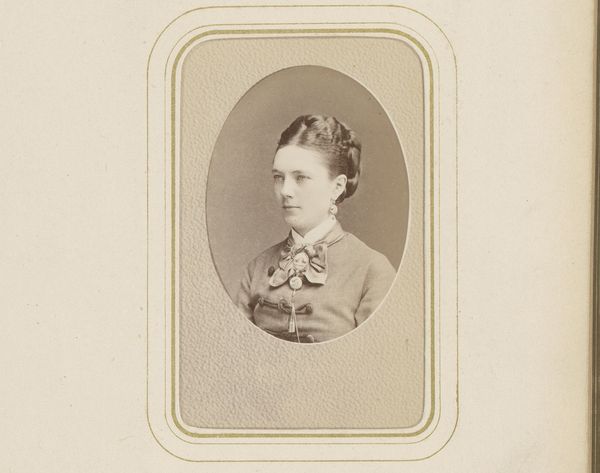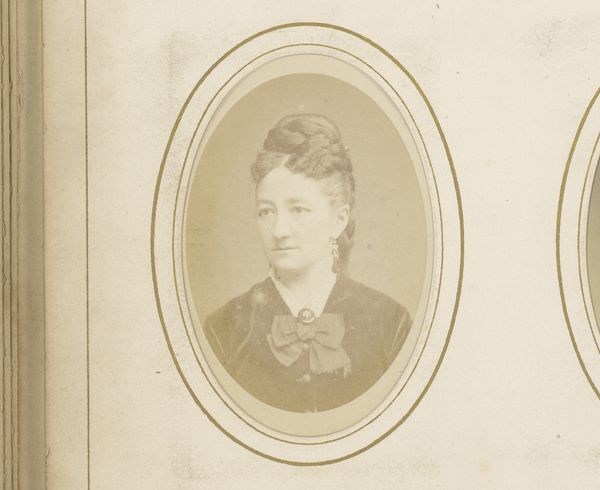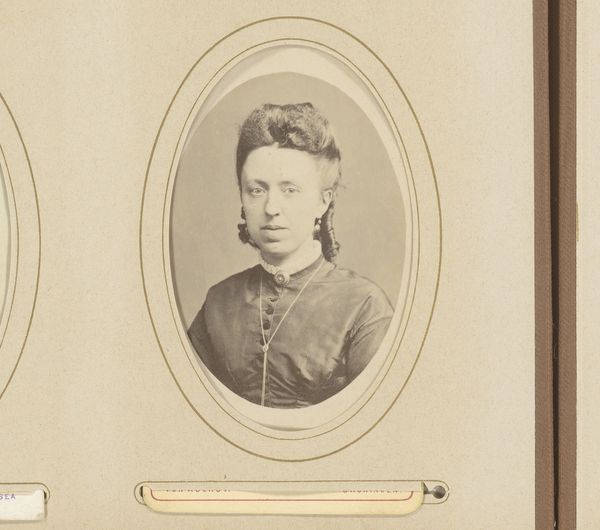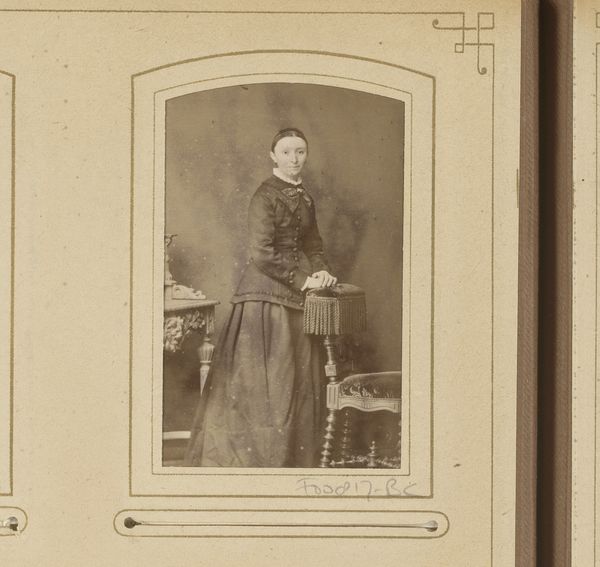
photography
#
portrait
#
photography
#
historical photography
#
genre-painting
#
realism
Dimensions: height 82 mm, width 50 mm
Copyright: Rijks Museum: Open Domain
Editor: This is "Portret van een vrouw," or "Portrait of a Woman," a photograph by A. Böeseken, dating between 1858 and 1890. It feels very formal and constrained to me. What do you see in this piece? Curator: It's a captivating example of how early photography shaped and was shaped by societal expectations of women. The subject's attire, her controlled posture—these are performative acts. I see a negotiation of power within the rigid social structures of the 19th century. Does the controlled representation of women challenge or uphold normative gender roles? Editor: That's interesting, I hadn’t thought of it that way. Her dress seems almost… generic? Curator: Exactly. This deliberate presentation—down to the ruffled collar and restrained hair—speaks volumes. Photography offered a novel means of self-representation, but, tell me, what constraints do you think were imposed? We might reflect upon how race and class impact on representations of women. Editor: So, beyond just being a portrait, it's a kind of document of its time? An encoding of social and political realities? Curator: Precisely! This image becomes a site where we can unpack assumptions about femininity, labor, and the gaze itself. I see the artist navigating a fine line of social acceptability. Think about what it meant to be female, and photographed, at this moment. Editor: I see it differently now, less a straightforward portrait and more a statement. Thank you for your fresh perspective. Curator: And thank you. Your observation helps me appreciate that we, as viewers, project our own biases onto historical works, reminding us of the necessity to interrogate power and the visual regimes framing identity even today.
Comments
No comments
Be the first to comment and join the conversation on the ultimate creative platform.
